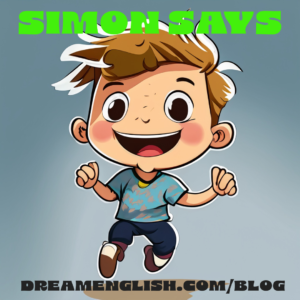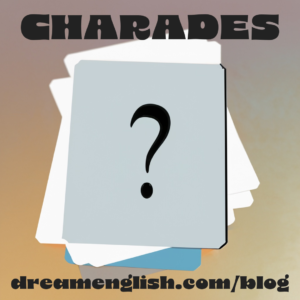Quick Game Facts:
- Name: Simon Says
- Recommended Ages: 4-10
- Materials Needed: Flashcards
- Prep Time: Minimal

Introduction:
Hello, language learners and enthusiastic educators! Are you ready to add a fun and interactive element to your language lessons that will boost vocabulary and listening skills? Look no further than the classic game of “Simon Says”! In this variation, we’ll use flashcards to give instructions related to the words on the cards. Get ready to follow commands, practice vocabulary, and have a blast while playing “Simon Says” with a twist!
Overview:
- Objective: Play Simon Says using flashcards by giving instructions related to the words on the cards.
- Recommended Ages: 4-10
- Materials Needed: Flashcards
- Prep Time: Minimal
Setting Up the Game:
Setting up “Simon Says” with flashcards is easy and adds a dynamic twist to the traditional game! Prepare a set of flashcards with various words or phrases related to the vocabulary you want to focus on. Ensure the flashcards are age-appropriate and aligned with the language proficiency of your students. Shuffle the flashcards and keep them facedown in a stack.
Playing Simon Says:
Get ready to listen carefully and follow instructions while boosting your vocabulary with “Simon Says”! Here’s how it works: Designate one player as “Simon” and have them hold the stack of flashcards. Simon will pick a card from the stack and instruct the other players using the phrase “Simon says.” For example, if the flashcard shows the word “jump,” Simon might say, “Simon says, jump!” The other players must then perform the action described on the flashcard. However, if Simon gives a command without saying “Simon says” before it, the players must not perform the action. Any player who mistakenly follows an instruction not preceded by “Simon says” is out. The game continues with Simon giving more instructions using different flashcards until only one player remains.
Making It Educational:
While enjoying the lively game of “Simon Says,” let’s maximize the educational value! After each round, take a moment to discuss the vocabulary words used in the instructions. Encourage students to explain the meaning of the words and provide examples of how they can be used in sentences. Use the opportunity to reinforce pronunciation, expand vocabulary, and promote active listening skills. You can also introduce new flashcards with additional words for more variety and learning opportunities.
Tips and Variations:
- Adjust the difficulty level of the game by selecting flashcards based on the age and language proficiency of the students.
- Use a variety of action words, adjectives, and simple phrases on the flashcards to enhance vocabulary and language usage.
- Incorporate additional challenges by asking the players to form sentences using the word on the flashcard after performing the action.
- Collaborative option: Divide students into pairs or small groups and have them take turns being “Simon.” This encourages teamwork and cooperation while reinforcing vocabulary and listening skills.
Benefits of Simon Says:
Playing “Simon Says” with flashcards offers a range of benefits for language learners. It enhances vocabulary retention and recall, promotes listening and comprehension skills, fosters quick thinking and response, improves pronunciation and fluency, and creates a lively and engaging learning environment. The game encourages active participation, boosts confidence, and reinforces language concepts in a fun and interactive way.
Conclusion:
Dear language enthusiasts, “Simon Says” with flashcards is a dynamic and interactive game that challenges students to listen, follow instructions, and expand their vocabulary. As they engage in the game, their language skills will flourish. So, gather your flashcards, pay attention to Simon’s commands, and let’s have a blast while playing “Simon Says” with a twist! Stay tuned for more inspiring game ideas in our upcoming blog posts. Happy playing and learning!
